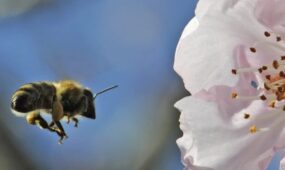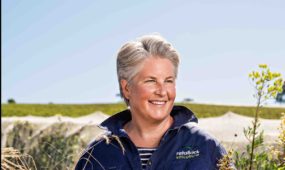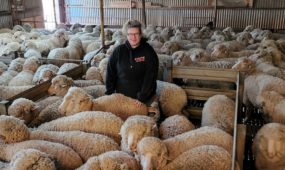Abalone divers celebrate 50 years of buried treasure
Primary Industries
For half a century, an intrepid group of South Australian divers have braved shark-infested waters to supply the banquet tables of Hong Kong and China with green lip abalone.

Sign up to receive notifications about new stories in this category.
Thank you for subscribing to story notifications.
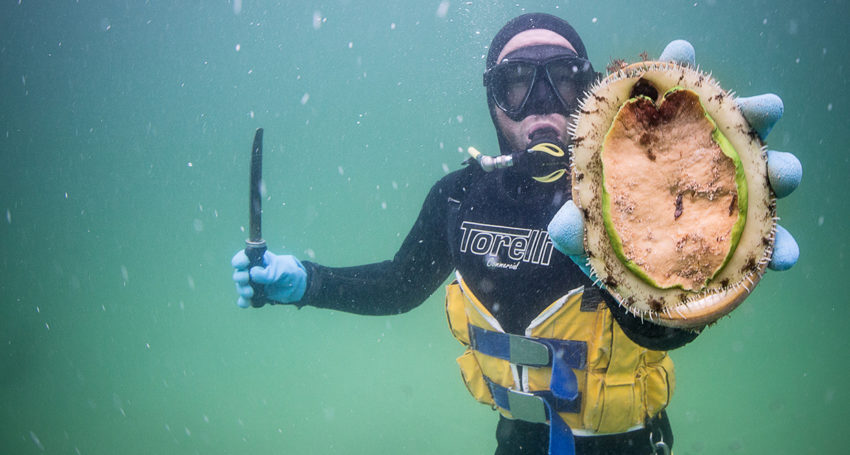
Being a high-value Chinese status symbol has meant wild abalone stocks have dwindled across the world but a conservative quota system and progressive sustainability practices have allowed the Australian industry to remain afloat.
Australia is the largest wild caught abalone exporter and produces almost all of the world’s green lip abalone, one of the largest and most sought after species.
Green lip is prized in Hong Kong and China for its consistent creamy white colourings, texture and flavour and is regarded by many as the best sustainably caught wild abalone in the world.
“It’s one of those seafoods that has escaped the western palate but it’s been revered as a delicacy and the food of emperors for centuries in Asian cultures,” says Jonas Woolford, the President of the Abalone Industry Association of South Australia, which first formed in 1969.
The bulk of Australia’s green lip is sourced from South Australian waters in an area so notorious for Great White Sharks that it was used to shoot footage for Steven Spielberg’s 1970s movie Jaws.
As the association prepares to celebrate its 50th anniversary with a book and a series of events in November we take a deeper look at this proud and pristine fishery.
Early Days
Australia’s commercial abalone fishery began on the east coast in the late 1950s and gradually moved south around the coast and to Tasmania as demand from Asia grew.
South Australia’s first export shipment of tinned abalone to Hong Kong by the South Australian Fisherman’s Co-Operative Limited (SAFCOL) occurred in mid 1964, five years before the Abalone Industry Association of South Australia was formed.
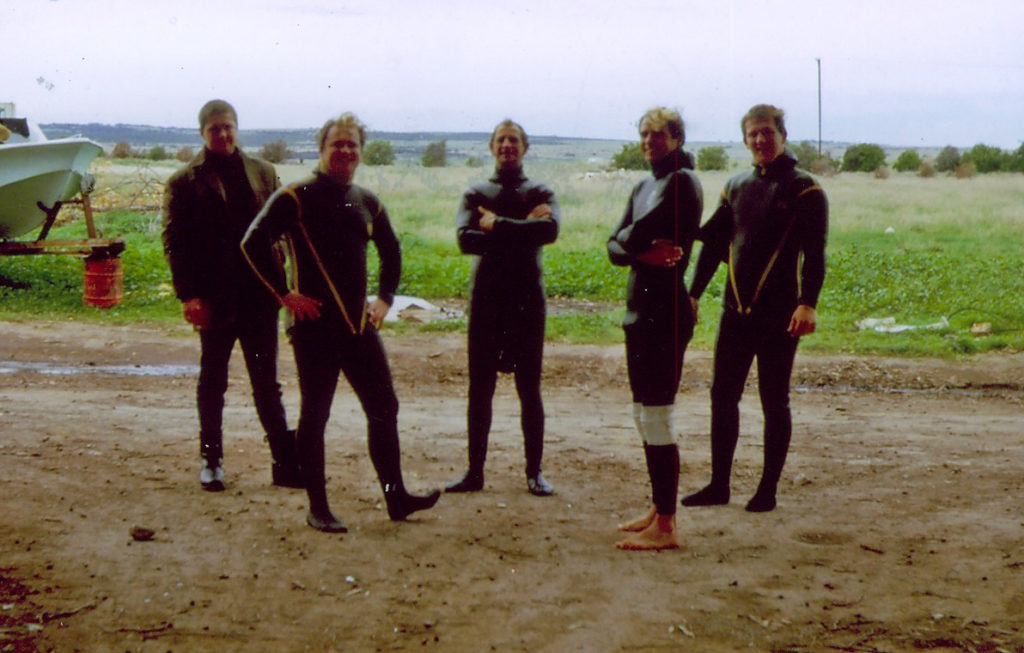
Pioneering Eyre Peninsula abalone divers in the 1960s Ron Carey, ‘Thomo’, Bob Cunningham, R Fox and Vin Murphy.
Jonas Woolford and his brother Tobin are second-generation divers and run Eyrewoolf Abalone at Streaky Bay on the state’s West Coast. In his role as South Australia association president, Jonas is responsible for piecing together the book, which aims to capture the stories and the characters of the South Australian industry ahead of the 50th anniversary celebrations in November.
“In the late 1950s they were mainly diving as a weekend job out of Sydney and then they started to push down that eastern coast to Mallacoota (in Victoria), which became the frontier gold rush town of abalone,” Woolford says.
“But once that started to become depleted only a few years later, a number of the divers started to work around the coastline and push further west.”
More than 100 abalone diving permits were issued in South Australia up until the late 1960s, mainly to part-timers and hobbyists before the Department of Fisheries brought in a rule that only full-time abalone divers could have a licence. South Australian permits were reduced to 30 in 1971 and later extended to 35.
There are now 34 licences split across three zones in South Australia: Western (22), Central (6) and Southern (6).
An electrician from the South East of South Australia, Cliff Edmunds, began diving for abalone in his spare time in the 1960s and moved to Streaky Bay on the state’s West Coast in the mid 1970s to become a full-time abalone fisherman. He opened a processing plant in the small fishing town in the 1980s and began exporting abalone to Hong Kong in the 1990s.
Cliff is now long-retired but his sons Damon and Dion, pictured below, have expanded the business to three licences and process the catch of another six divers, including the Woolfords, to be one of the major players in the wild caught green lip abalone industry.
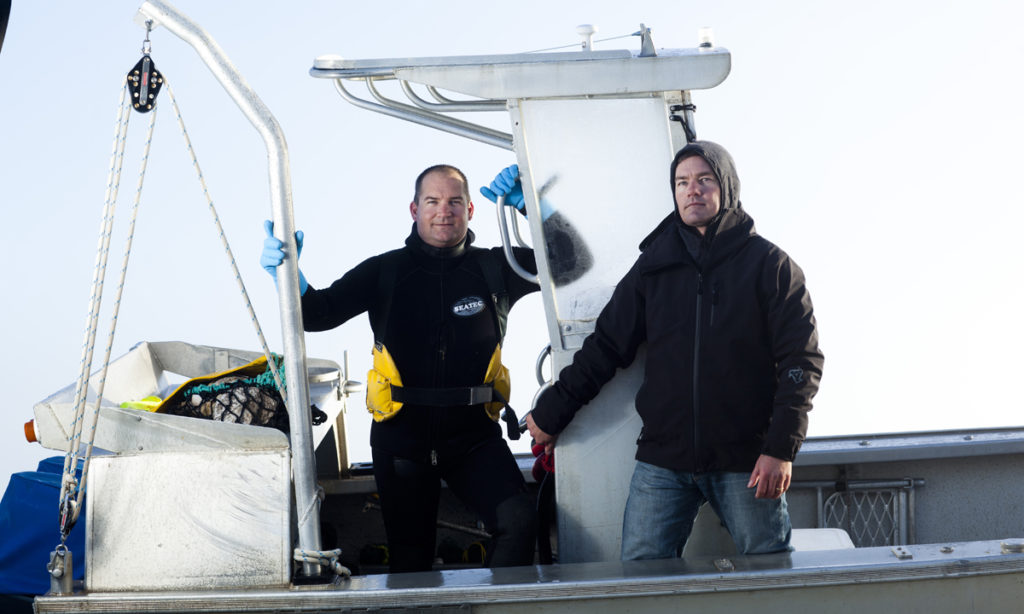
Damon says the Streaky Bay Marine Products factory has moved away from other lines such as whiting and shark to expand its abalone processing capabilities and product range over time, which includes their own 2Brothers branded cans.
He says being able to control the supply chain from the ocean floor to the customer has been an important part of the business.
“Dion and I concentrated more on the abalone and we got other divers to sell to us,” Damon says.
“Because we’ve got the synergies of our own boats, our own factory for processing and doing our own exporting, the more we’ve got going through our factory the better.”
The Fishery
The season runs year-round from January 1 to December 31 in the Western and Central zones and from October 1 to September 30 in the Southern region. Quotas were first introduced in South Australia in 1985 and the 2019 abalone quota in SA is just over 640 tonnes, which is similar to Victoria and about half of what is caught in Tasmania. Small amounts of wild abalone are also caught in Western Australia and New South Wales.
However, most abalone caught outside of South Australia is black lip abalone. South Australia produces about 70 per cent of Australia’s 488 tonnes of wild caught green lip abalone, with many of the largest and most sought after specimens coming from the Western Zone.
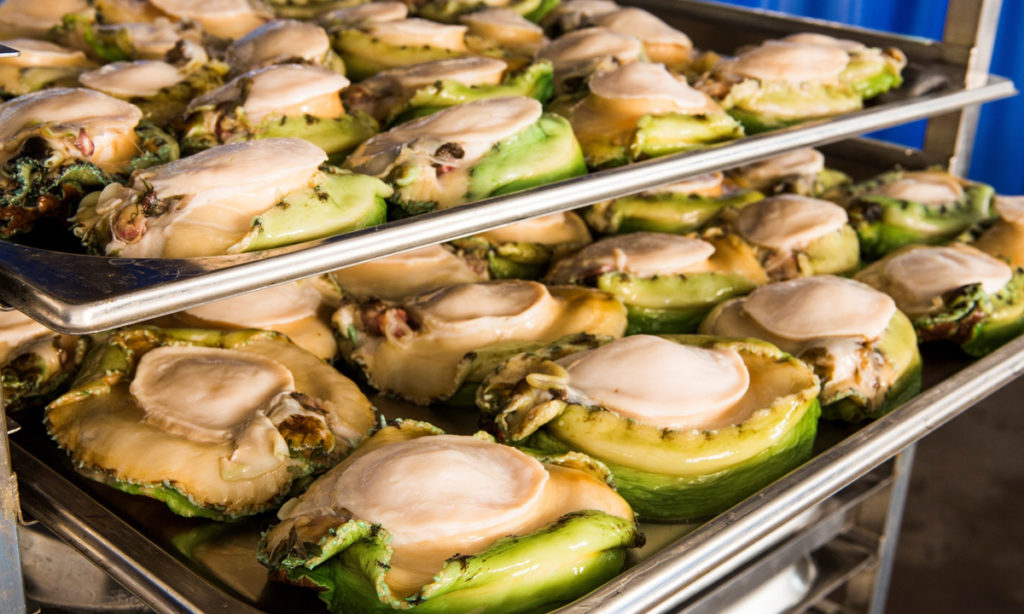
Quotas have been reduced by about 30 per cent over the past 15 years to protect the long-term viability of the fishery. This has led fishermen and marketers to seek more direct-to-customer sales, as well as the introduction of ultra premium live exports.
Western Abalone, based in the famous Eyre Peninsula fishing town of Port Lincoln, is a co-operative of 14 licences and the largest processor and marketer of abalone in South Australia.
General Manager Kane Williams says the quota reductions in the Western Zone are unique because they are voluntarily agreed upon by the industry and not mandated by government.
“Most of the licences in this Western Zone are family-held so there’s strong family lines and a long-term view over on this side of the state where people are prepared to take short-term pain for ideally longer-term gain,” he says.
“There’s no issue with catching quota – 95 per cent of the quota was caught by the end of June this year but we’re trying to be as agile as we can in making sure we’re making decisions that reflect what we see.”
Western Abalone has its own brand, Golden Line, for its canned black lip abalone and has also started shipping live abalone to Hong Kong, China and Sydney.
“The supply chain for live starts right from the diver so there is extra effort and stress involved right the way through to the market so there needs to be a premium associated with that,” Williams says.
“We’re growing it every year – I don’t see that we’ll ever be 100 per cent live but we’ll keep growing it until we find the equilibrium between that and the other products.”
The majority of South Australian green lip abalone is cleaned and blast frozen before being exported. Black lip abalone out of South Australia is generally canned or cooked in vacuum-sealed plastic pouches.
Jonas Woolford says the reduced quotas have highlighted to many fishermen the importance of value adding by being involved in the supply chain as long as possible.
“There was that realisation when we saw what was going on with dairy farmers and milk and supermarkets that when you don’t have control of the supply chain you just get traded off,” he says.
“There’s been a huge investment made into not only purchasing the licences but that long-term involvement with the industry. When you own the processing factories and when you live in the communities, it’s the international dollars that flows back into these coastal towns that often props up a lot of other businesses too.”
Exports
About 90 per cent of South Australian abalone is exported, with Hong Kong the biggest market. However, the China Australia Free Trade Agreement (CHAFTA), which reduced to tariffs to zero from this year, has led to an increase in direct exports to Guangzhou, Shenzhen, Beijing and Shanghai.
Adelaide-based seafood marketing and trading company Blue Sky Fisheries specialises in abalone and markets product for a number of South Australian fishermen including the Edmunds brothers.
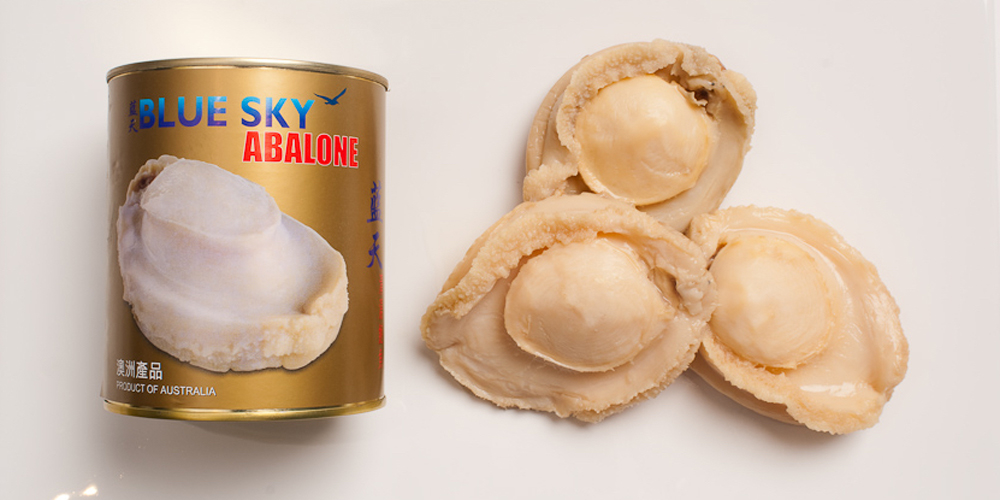
General Manager David Pickles says while Hong Kong and China drive the bulk of sales, New York, Singapore, Malaysia and even Sydney are also valuable markets.
“Wherever there are affluent Chinese populations around the world then there’s a market for abalone,” he says.
“But Hong Kong people have a big tradition of eating wild green lip abalone whereas in China it’s more of an emerging market.”
Blue Sky sells a lot of its canned black lip products direct to the food service industry, such as restaurant chains and wedding banquet companies, while the frozen green lip abalone usually is sold in retail shops to be eaten at home by wealthy Chinese on special occasions.
“In this industry, it’s really about having security of supply so it’s really important that when we go to see them they know that we deliver what we say we can, which means a lot to them especially when they are planning out weddings for the next 12 months,” Pickles says.
“With the green lip we sell direct to retail chains as well as to importers in Hong Kong and some direct to wholesalers in China and New York.
“If you’re a housewife in Hong and it’s Chinese New Year and you want to find the best abalone you can to celebrate with your family you’ll buy a large green lip from Australia, preferably from South Australia.
“We prefer to go down the chain as far as we can but we realise there needs to be a balance because people always think that demand is insatiable for abalone and never stops but it’s not true – it’s cyclical.”
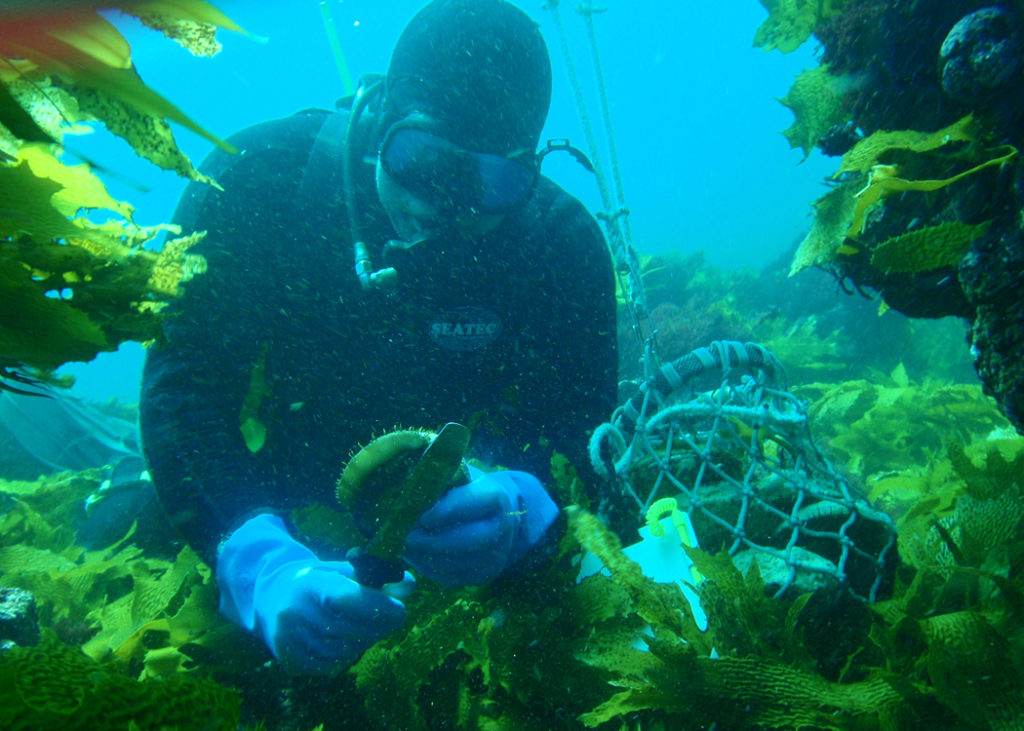
Tobin Woolford harvesting black lip abalone.
Abalone are sold in US dollars overseas and regularly fetch more than USD$100 per kg, which means the relatively low value of the Australian dollar in the past few years has helped Australian abalone fishermen maximise returns on global markets.
“It’s a luxury commodity and there are times when, for whatever reason, demand drops away for both the frozen and the cans but the last three years both species have been selling really well and we’re having to quota our customers because we don’t want them to go away but we need to keep them happy,” Pickles says.
Farmed abalone competition
Led by China, global farmed abalone production has increased seven-fold since 2005 to about 150,000 tonnes a year with Australia currently farming about 1500 tonnes annually.
Farmed abalone is mainly green lip and now represents 95 per cent of the total market. But the farmed product does not grow nearly as large as its wild caught cousins and has done little to dampen strong demand for Australian wild caught abalone.
Woolford says while many fishermen feared the rise of abalone farming would drown out the wild fishery, it has actually led to wild abalone becoming even more valued.
“Only going back 10-15 years ago, Australia was the dominant player with nearly 50 per cent market share, now we are down to 3.5 per cent,” he says.
“But those Chinese who are exceptionally wealthy want to differentiate themselves and they don’t want to be associated with a farmed product.
“They will do whatever they can to buy what’s harder to get hold of and that just happens to be the wild caught Australian abalone that’s coming from really clean blue waters and processed safely. They also trust Australian produce so that’s something we have to maintain and promote.”
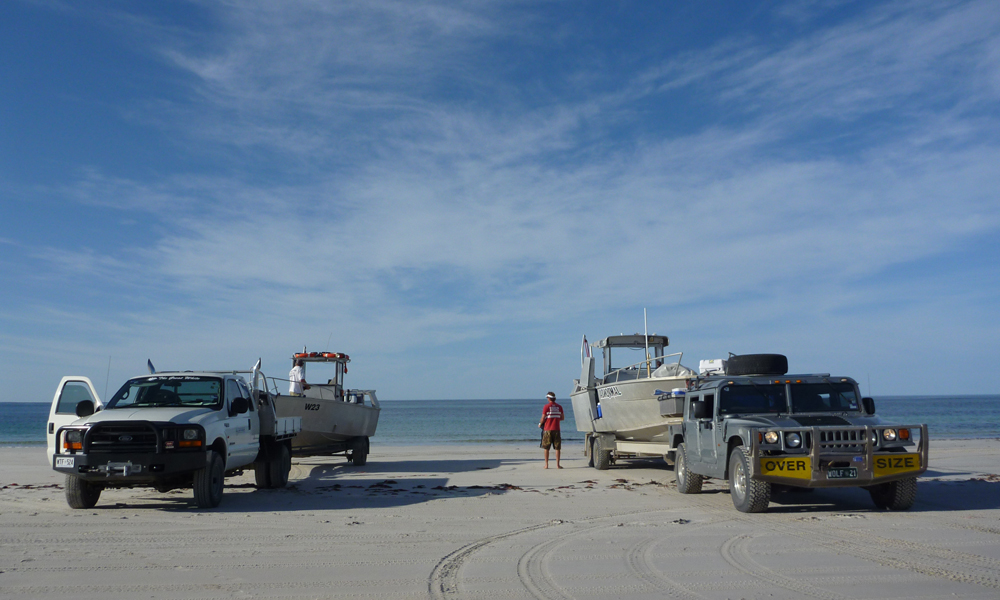
Ian Proude and Jonas Woolford prepare to launch from Sheringa Beach.
Damon Edmunds was among those who feared abalone farming could severely impact his business.
“It hasn’t been as big a threat to us as we thought – it’s still in the market so it’s a competitor but it hasn’t been as scary as we first feared,” he says.
“You’ve got all these young Chinese customers who are now getting exposure to (farmed) abalone and as they are getting wealthier and need more status they might move up to wild caught Australian abalone.”
Sharks & Safety
Three South Australian abalone divers and two deck hands have died over the 50 years as a result of boat capsizes and shark attacks. The bends, also known as decompression sickness, was a problem for many divers, especially in the early days but did not result in any direct deaths.
Terry Manuel was killed by a shark near Streaky Bay in 1974, prompting a number of abalone divers from Port Lincoln including Jim ‘Tiki’ Ellis, Vin Murphy, Darcy Eldridge, Norm Craig and Trevor Garnaut – to develop an abalone diving cage. The first self propelled shark-proof cage was conceived and built by Jim Ellis.
Woolford says the shark cages used today have hardly changed since they were first designed in the 1970s.
“They nailed it pretty much first go and we’re still using it basically exactly as it was first built,” he says.
“Trying to make it as safe as possible is something that we are definitely focused on.
“It’s about fishing smarter not fishing harder and many people feel that all the fun has gone out of the industry now because it is so regulated – it’s definitely not the frontier exciting industry that is used to be when it was like a gold rush.”
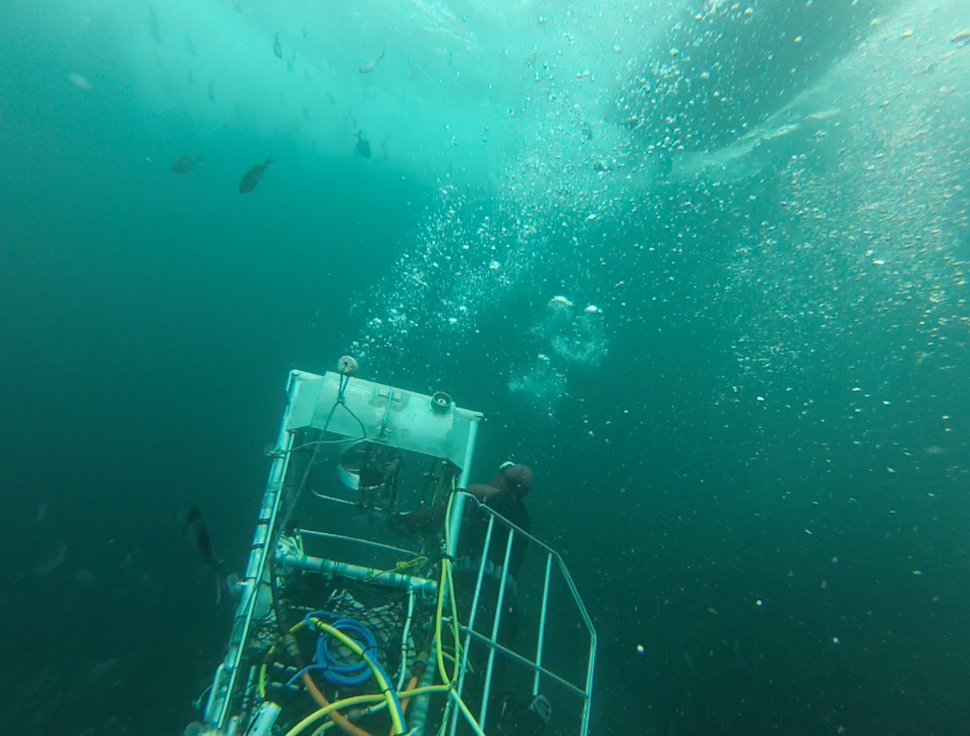
A shark cage surfacing from the deep.
Neptune Island is about 55km from Port Lincoln and is a known hot spot for Great White Sharks. So much so that Steven Spielberg sent a production team there in the 1970s to shoot live footage for his blockbuster movie Jaws.
Woolford says he thinks the rise of shark cage diving adventure tourism industry in the area has led to Great Whites becoming accustomed to approaching divers in cages.
“Sharks are an ever-present danger more than ever now.
“We went through a period where there were still quite a few free swimmers but now everyone’s using cages and we’re having more interactions than ever.”
Sustaining the Fishery
Abalone can be found clinging to shallow reefs within metres of shore and at depths of up to 50m. They are also caught near offshore islands and reefs 50km out to sea.
Wild abalone in South Australia take about six-eight years to reach legal size, depending on a number of variables such as water temperature, food availability and reef direction.
While the vast size of the Southern Ocean fishery means divers sometimes drive long distances to remote boat ramps to launch their vessels, this also spreads the minimal environmental impact over a huge area.
Demand is cyclical in line with annual celebrations such as Chinese New Year, however South Australian Western Zone abalone fishermen have agreed to decouple supply to spread their catch more evenly across the year and further into the winter months when the abalone tend to be larger.
This has a double benefit because not only are the bigger green lip abalone more prized but because the quotas are measured by weight it means that the bigger the abalone then the fewer are taken per licence to fill a quota.
Kane Williams says the sustainability of the industry has underpinned almost every decision the fishery has made, particularly in the past 20 years.
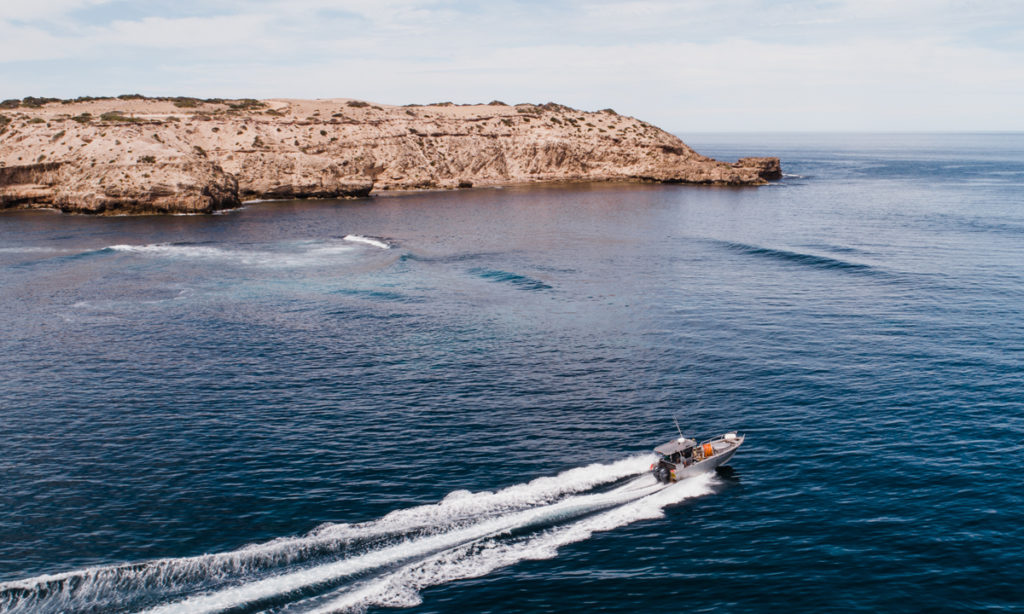
He says abalone diving is a boutique harvesting industry with very little environmental impact.
“We have no bi-catch, we’re hand collected, we measure and choose every fish individually before it’s sent up to the boat – we don’t even drop an anchor – so in terms of impact we would be among the most benign fisheries in the world,” Williams says.
“Everybody’s making decisions with an eye to the future. We all want to make the fishery last and to ensure we are doing the right thing by the resource and that’s driven in a big part by the licence-holders.”
Jonas Woolford won a Nuffield Scholarship in 2017, which allowed him to travel to a number of the world’s abalone fisheries including New Zealand, Japan, USA, Mexico and South Africa.
“There is no doubt Australia has the best wild abalone management practices in the world,” he says.
“That was one of the assumptions that I wanted to test and when you look at our stocks and how they are performing we are being cautious and struggling a little bit but we still have quite a productive fishery.
“There’s a lot of ocean and that’s one of the brilliant things about it.
“I’ve been diving for over 20 years and every day is different – you can still go exploring and find places that have probably never been dived before despite over 50 years of industry.”
The book Ab Yarns; 50 Years of Blowing Bubbles will be launched in Port Lincoln on November 15 from 3pm at Beer Garden Brewing with a celebration reunion dinner to follow at the Port Lincoln Yacht Club.
Inquiries and pre orders to be made by contacting abyarnssa@gmail.com
Jump to next article
